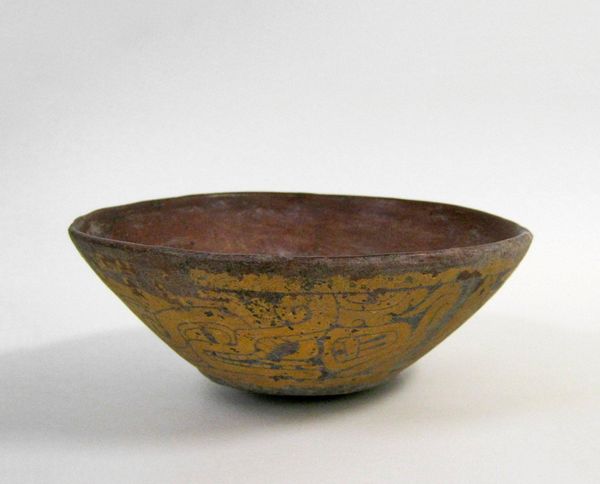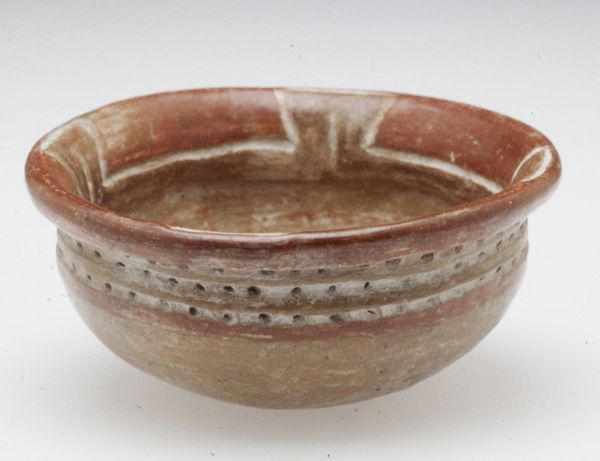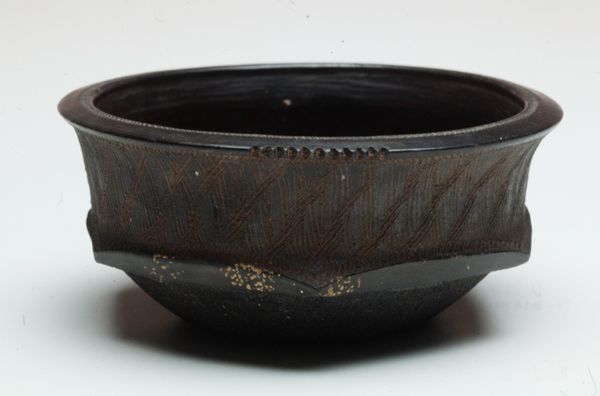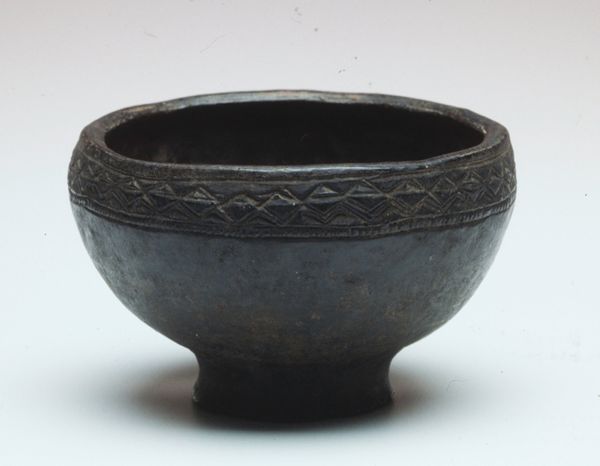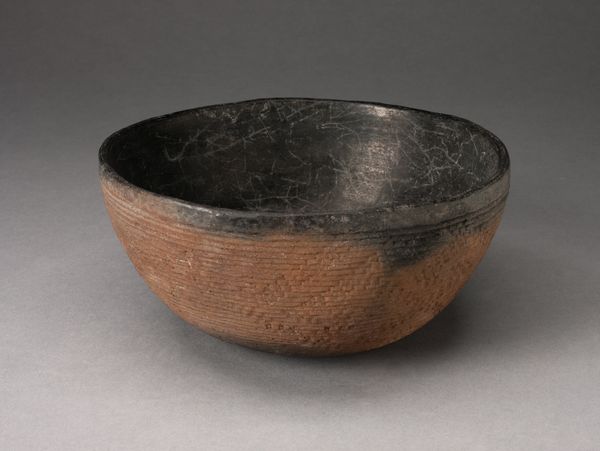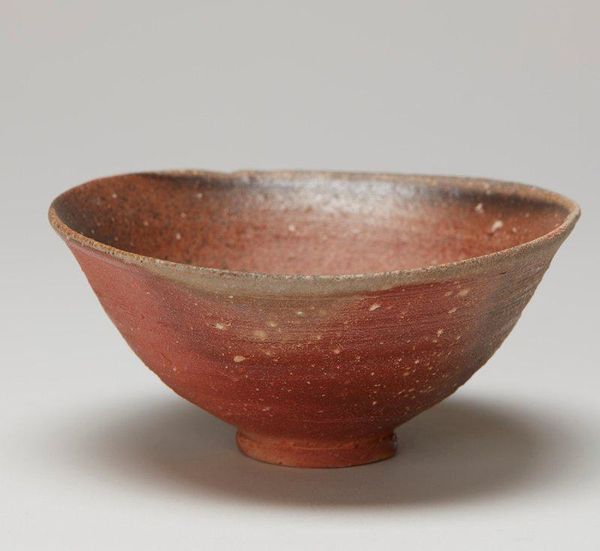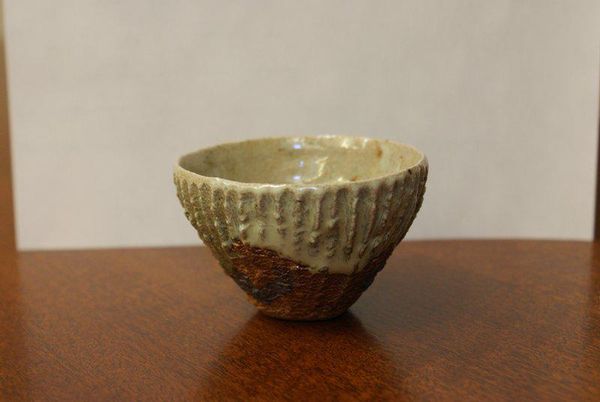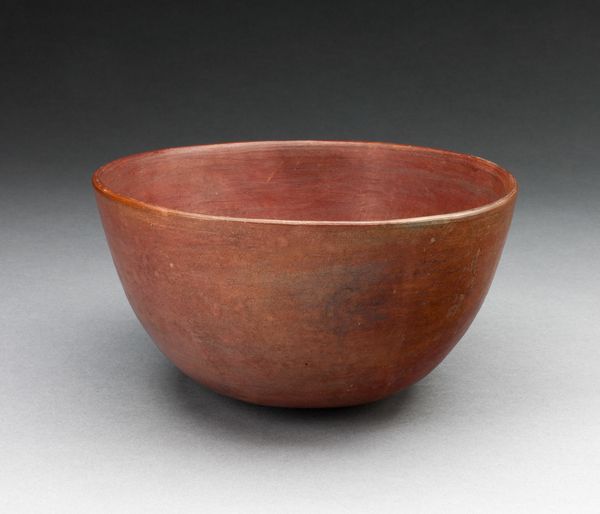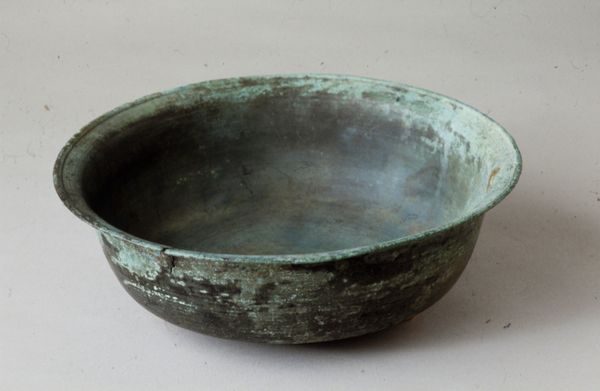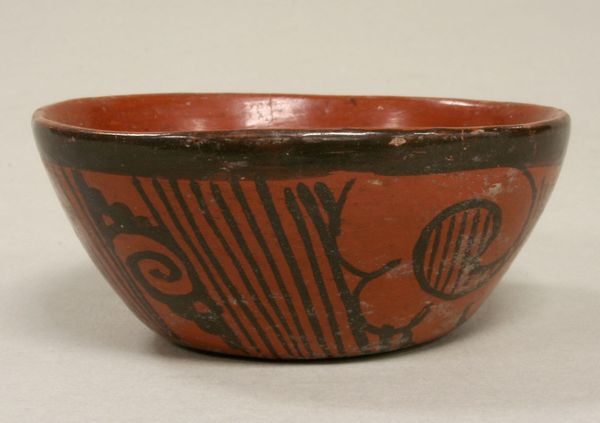
ceramic, earthenware
#
ceramic
#
culinary art
#
earthenware
#
ceramic
Dimensions: 3 7/8 x 8 1/2 x 6 1/2 in. (9.8 x 21.6 x 16.5 cm)
Copyright: Public Domain
Curator: Here we have a "Bowl," dating from around the 4th century. It comes to us from Michoacan and resides here at the Minneapolis Institute of Art. It is crafted from earthenware. Editor: My first thought is how deceptively simple it appears. But then the reddish-brown tone catches your eye, especially with those angular patterns around its belly. A warm, tactile feel despite being a photograph. Curator: The zigzag motifs are incredibly important; these types of meanders often speak of journeys, paths, and the cyclical nature of life. In many Indigenous American cultures, they denote transitions between worlds. It could represent the underworld and our world, a symbolic echo in a vessel meant for sustenance. Editor: And just consider how this simple bowl tells a complex story of process. To me, the fired earthenware speaks volumes – from the gathering of the clay itself to the precise coiling, the slow build of its form. This wasn’t simply molded; it was crafted, a tangible record of human labor. What was the division of labor at the time? Was pottery a highly prized trade? Curator: Absolutely, you bring up the significance of labor and skills, and the passing of traditional knowledge in this region. It also gives a clue on the people, who had enough sense of sedentary settlement to worry about creating pottery, which tells its own story. Think about the culinary customs encoded in this bowl - not only what they ate, but how they ate. Was food served communally? How did a piece of pottery tie everyone together, perhaps even to something more spiritual? Editor: To hold something like this… the weight, the rough texture. I would really enjoy learning what clays are unique to the Michoacan area that helped form such a visually distinctive piece, how such simple materials became culturally defining. Curator: Seeing this bowl invites a deep, profound connection to an ancestral narrative. And perhaps it can inspire us all to meditate about material existence and symbolic significance intertwined. Editor: For me, I wonder how the local geological sources influenced the making, and whether that pottery work created larger communal ties and a cultural framework.
Comments
No comments
Be the first to comment and join the conversation on the ultimate creative platform.
